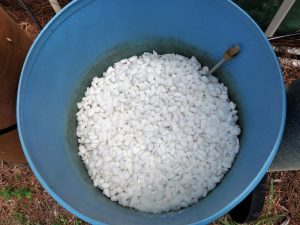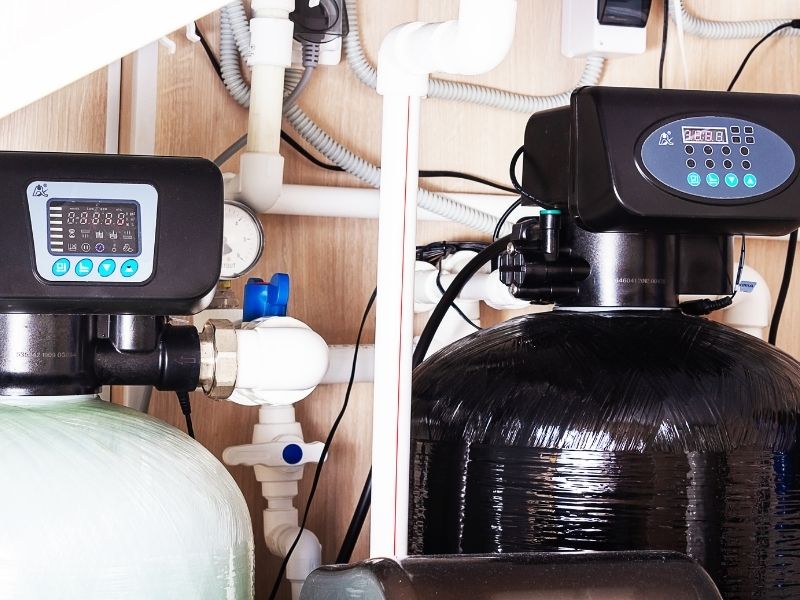Your water softener is a device that makes hard things easy. It removes hardness from your water so that your soap can lather properly. A whole-house water softener even protects your pipes and other appliances by preventing accumulated scaling on their surfaces.
Surely, it has saved you many headaches and made hard water the least of your worries. Since it does so much, it deserves some love as well. Let’s see how to clean your water softener so you can retain all its incredible benefits.
How to Clean Your Water Softener Tanks
The Resin Tank
The resin tank is the heart of your water softener, so you should pay attention to it. If it becomes too dirty or the hard minerals overwhelm it, your water softener loses its efficiency. Your laundry becomes stiff while your hair and skin become dry. A loss of efficiency is not good news for you because dealing with hard water is really not nice. For this reason, you need to learn how to clean it to prevent that nightmare.
Your resin tank contains a negatively charged resin bed that attracts and removes the hard materials in your water. You need to give these resin beds some good cleaning every once in a while. Because too much hard work without good rest can wear them out over time. Cleaning them is actually easy since there are expertly manufactured resin bed cleaners. They come with adequate manufacturer instructions and are not difficult to use.
The Brine Tank

If the resin tank is your water softener’s heart, the brine type might represent its lungs. Or maybe it’s just a second heart. Water softeners can be strange like that. Whichever may be the case, what’s important is that they need each other to work perfectly. So, if you will be cleaning one with care and attention, you must do the same to the other to get optimal results.
The brine tank houses salt pellets in the same way that the resin tank houses the resin bed. When the salt pellets in the brine tank break down, they create mud-like substances in the tank. This phenomenon is also known as salt mushing. If you don’t get rid of the mud-like substances or sludge, it will cause the overflow of your brine tank.
Therefore, removing them is one of your most important cleaning tasks. You may need to push a little if they do not come off easily. You’ll have enough space to do this when the salt pellets are low in volume. Although, you may need to empty the brine tank itself if you see stubborn organisms known as mold forming at its bottom. At that point, it is asking for proper cleaning, and you must make sure to give it just that.
Watch this video that shows in detail how and why you should regularly clean the brine tank of your water softener:
Tools for Cleaning a Water Softener
Since you’ll be cleaning your water softener’s heart and lungs, you want to make sure you aren’t making use of things that can cause it harm. Everybody likes to clean with bleach since it is quite effective, so you may want to try that too. It’ll work well against stubborn molds in your brine tank. But you need also to make sure that the manufacturer of your particular brand of water softener won’t be affected by bleach. Always obey the manufacturer’s instructions, even when cleaning. If the manufacturer objects, follow their recommendation. It will go a long way to help you preserve your beneficial relationship with your water softener.
But if the manufacturer encourages it or does not object, then you can go ahead and fill your brine tank with a few cups of bleach. You can then make the water softener undergo regeneration to complete the cleaning. Using bleach is easy, straightforward, and effective.
In case bleach is not an option, vinegar works just as fine. But with vinegar, you won’t need to trigger the reproduction process manually. All you need to do is scrub.
Salt Bridges Can Ruin Things
Molds are not the only dangerous presence that can show up in your brine tank. Salt bridges can cause problems too, so you need to watch out for them. When salt sits for a longer time in your brine tank, it tends to form layers known as bridges, giving a false impression that the tank is full. Paying attention to this from time to time by trying to collapse likely salt bridges can help you avoid being fooled.
When there are no salt bridges, you have a good idea of the state of your brine tank and the regeneration cycle of your water softener. Proper monitoring of things like this will help your water softener stay healthy. It will therefore retain its efficiency and keep giving you its very best.
How Often Should You Clean Water Softeners?
It is important to clean your water softener each time it is due for a refill. This could be once a month or once every two months. It depends on what kind of water softener you’re using and its regeneration cycle. Also, ensure to clean whenever you notice any strangeness or irregularities. You don’t need to wait months or weeks if you notice anything that seems out of place.





